Difference between revisions of "How to Format and Mount the HDD/SSD on Raspberry Pi"
(No difference)
|
Latest revision as of 01:27, 8 December 2023
Contents
Overview
You can get more knowledge about hard disk partitioning, formatting, and mounting on the Raspberry Pi from the Internet.
Using Gparted tools to partition, format and mount SSDs
1. Install Gparted tool on Raspberry Pi
You can either use a terminal, and simply use the following commands:
sudo apt update sudo apt install gparted
Or via the graphical tool (“Add/Remove Software”), open the package manager and look for Gparted:
Check the box corresponding to gparted, and click “Apply” to start the installation, once installed, Gparted should be available in the main menu, under System Tools:
2. Use Gparted on Raspberry Pi
When you start Gparted, you need to type your password (administrator privileges are required). Then, you’ll get an interface looking like:
Start by picking the disk you want to modify in the top-right corner.
Reminder: It’s not possible to make changes on the disk you are currently using. You have to install Raspberry Pi OS on another device, and then plug the drive you want to edit.
Once done, you can change anything with a right-click on the partition name or in the graphical representation. I will show you how to resize a partition or create a new one.
Resize a partition
You need to unmount the partition before resizing it. That’s why you can resize the system partition once the system is loaded. As Raspberry Pi OS will automatically mount all partitions, the first step is to right-click on it, and choose “Unmount”:
Then, you have access to the Resize/Move option in the menu:
You can either move the cursor on the graphical representation to resize the current partition or type the new size in the form. Then click on “Resize/Move” to save your changes.
The last step is to click on the green tick to apply the changes on your disk.
Raspberry Pi OS should now automatically mount the partition each time.
Create a new partition
Once the disk is selected, make sure you have some unallocated space available to create a new partition. If not, you need to resize an existing partition first (or just delete one if you don’t need it anymore).
Then, click on the unallocated space, and choose “New” in the dropdown menu. A form will show up. Make sure to check the values where I added a red arrow:
At least, you need to set the new size (it will use all the space by default), the file system (fat32 for a small partition that you want to read on Windows, ext4 if you’ll only use it on the Raspberry Pi).
You can also choose a label, that will be used in the file explorer.
Once done, click “Add”. You’ll directly see the impact of your changes in the graphic representation. But you need to click on the green check to apply the changes on the disk. It may take a few minutes, depending on the partition size and hardware you use.
Once done, you’ll get a success message like this one:
If you want to access the new partition within the file explorer, the easiest way is to unplug the USB jumper and plug it in again. Raspberry Pi OS will automatically mount the new partition:
That’s it, you can now use it and create files in this folder
Mount a HDD/SSD with a command on a Lite version
Find the virtual drive name
Before doing anything else, you need to find the current name of the drive. Once you plug it in, Raspbian will detect the drive and partitions, and assign a name to it. Follow this procedure to find it:
- We’ll use “fdisk” to list the current devices on the Raspberry Pi.
- Use the command below:
pi@raspberrypi ~ $ sudo fdisk -l
- A list will appear, and most of the time your HDD/SSD drive is the last item, so it’s easy to read.
In my case, I have this:
- You have two things to note (squared in red):
- The partition name, assigned by Raspberry Pi OS: /dev/sda1 here.
- The file system type: FAT32 here.
- Once you know this, you have everything you need to move forward.
If you are not sure which one is your drive, the disk size may help you select the correct one (7.5G in above case). My SD card is 32G and is always identified as /dev/mmcblk0
Mount the drive
Now that you know the device and partition name, use the following procedure to mount it:
- Create a new folder in /media.
We’ll mount the USB drive in this folder, but you need to create it before:
pi@raspberrypi ~ $ sudo mkdir /media/usb
- Mount the drive to this place with this simple command:
pi@raspberrypi ~ $ sudo mount /dev/sda1 /media/usb -o umask=000
Don’t forget to replace parameters if needed. The syntax is “mount [PARTITION] [FOLDER]”. The -o allows you to add extra options.
PS: You can get more information about the use of the mount command from the Internet
Automatic mount on boot
As you’ll quickly see, you need to use the mount command each time you reboot your Raspberry Pi.
But there is something you can do to mount it automatically on boot:
- Get the partition id of your device:
pi@raspberrypi ~ $ sudo blkid
- You’ll get something like this:
The PARTUUID is the value square in red, on the /dev/sdb1 line.
- Open the /etc/fstab file:
pi@raspberrypi ~ $ sudo nano /etc/fstab
- Paste this line, or something similar depending on your values:
PARTUUID=b951dfde-01 /media/usb ntfs defaults,umask=000 0 0
- Fstab is a file to store drives and options related to it.
And if the drive is plugged in on boot, it will mount it directly.
- Save and exit (CTRL+O, CTRL+X).
Now you can reboot your system and check that everything works fine.
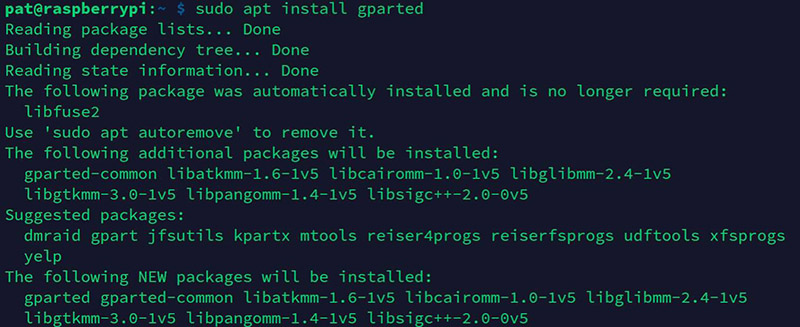

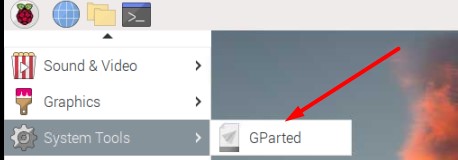
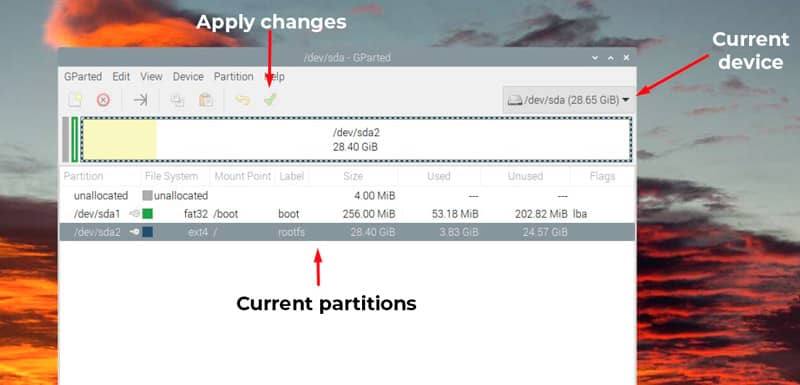
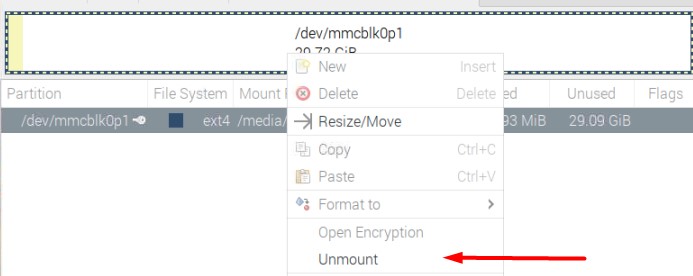
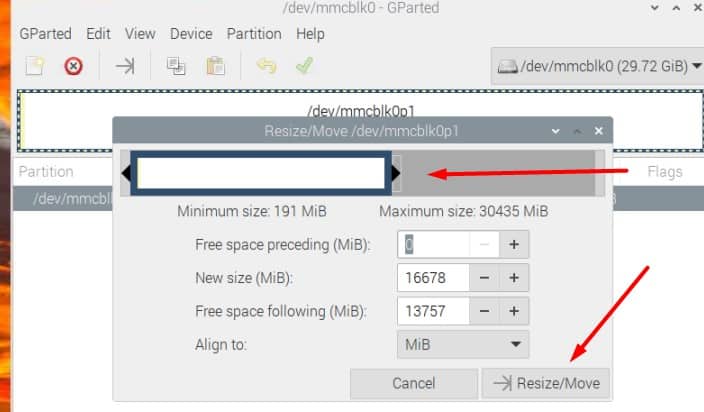
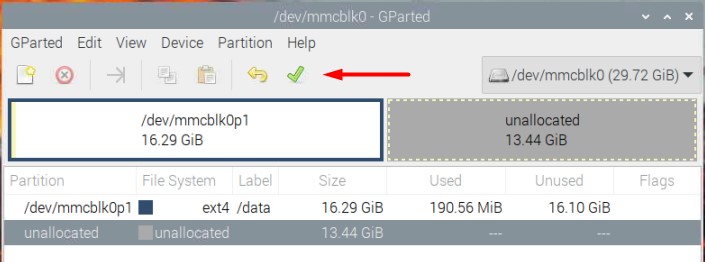
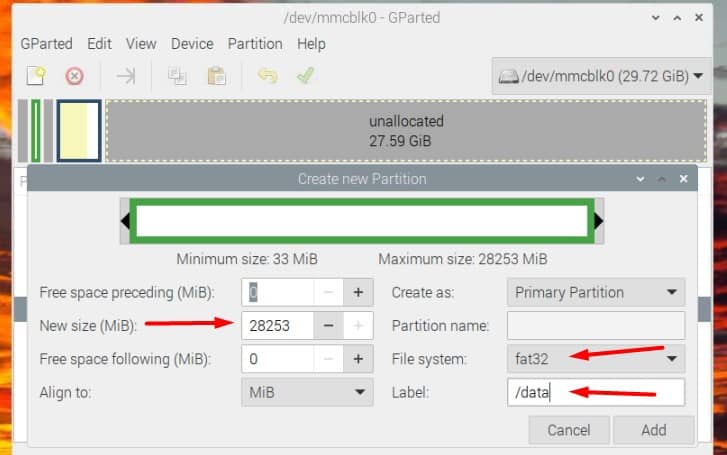




Enable comment auto-refresher
Anonymous user #2
Permalink |
Anonymous user #1
Permalink |